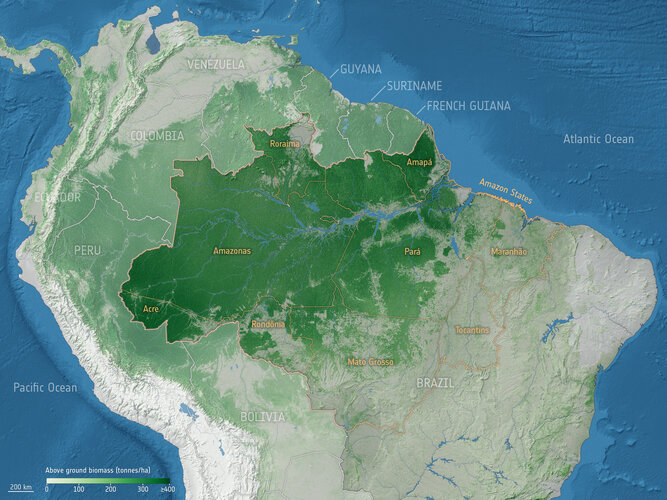
A recent study, published in Nature Climate Change, investigated the dynamics of forest carbon in the Brazilian Amazon from 2010–2019. The authors estimated that the Brazilian Amazon experienced a cumulative gross loss of 4.45 Pg C against a gross gain of 3.78 Pg C – resulting in a net loss of 0.67 Pg C of above ground biomass over the last decade.
According to co-author Philippe Ciais, “This net loss of carbon from the Brazilian Amazon forest is equivalent to seven years of fossil carbon dioxide emissions by the UK.” Philippe Ciais is also the science leader for the Regional Carbon Cycle Assessment and Processes project, as part of ESA’s Climate Change Initiative.
He adds, “The study shows that climate spells, like the severe El Niño of 2015, which resulted in extensive drought and heat over the Amazon, switched the carbon balance of intact forests from a sink to a large source of carbon dioxide, and so can amplify global warming.”
The authors of the study used all-weather microwave data from ESA’s Soil Moisture and Ocean Salinity (SMOS) mission, specifically vegetation optical depth dataset designed by INRAE Bordeaux, along with forest area change datasets from NASA’s Moderate Resolution Imaging Spectroradiometer and JAXA’s Phased Array type L-band Synthetic Aperture Radar.
Forest degradation – more important than thought
Over the past half century, terrestrial ecosystems have absorbed a third of year-on-year carbon dioxide emissions, despite emissions almost doubling over the same period. Tropical rainforests, including the Amazon, contributed significantly to this process as a particularly efficient carbon sink.
Professor Ciais points out that the study shows that human activities that ‘nibble away’ at forest carbon stocks by degradation induced by fires, logging and landscape fragmentation, contribute three times more to gross carbon loss from above ground biomass compared to deforestation.
He says, “Forest degradation is difficult to measure directly using optical satellite data because it often occurs at very small scales, for instance only the largest trees are removed by selective logging. The advantage of using the SMOS microwave data is that despite their coarse resolution, they capture the net biomass loss from all processes in a given region.”



